The
Refoamation
by Joe Bergeron
by Joe Bergeron
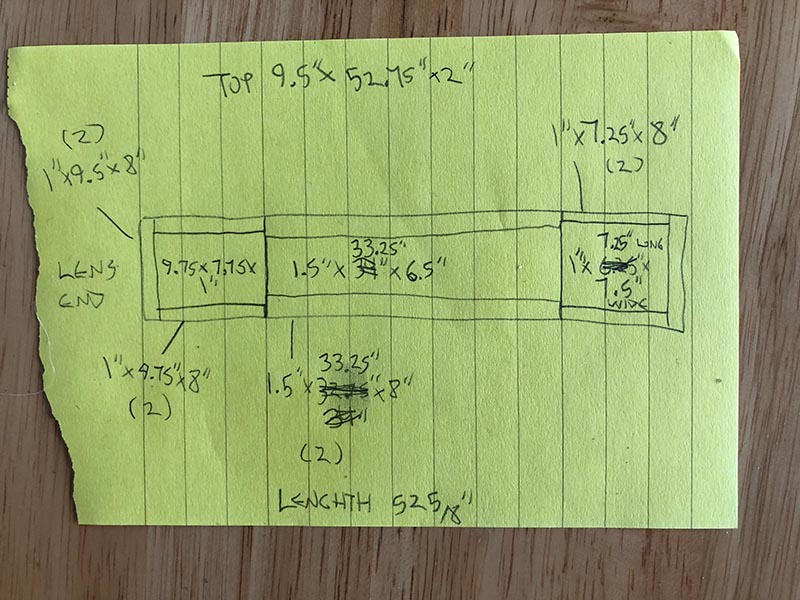 |
| Highly technical diagram depicting the
foam layout. |
 |
| The foam, shortly after being
unwrapped. |
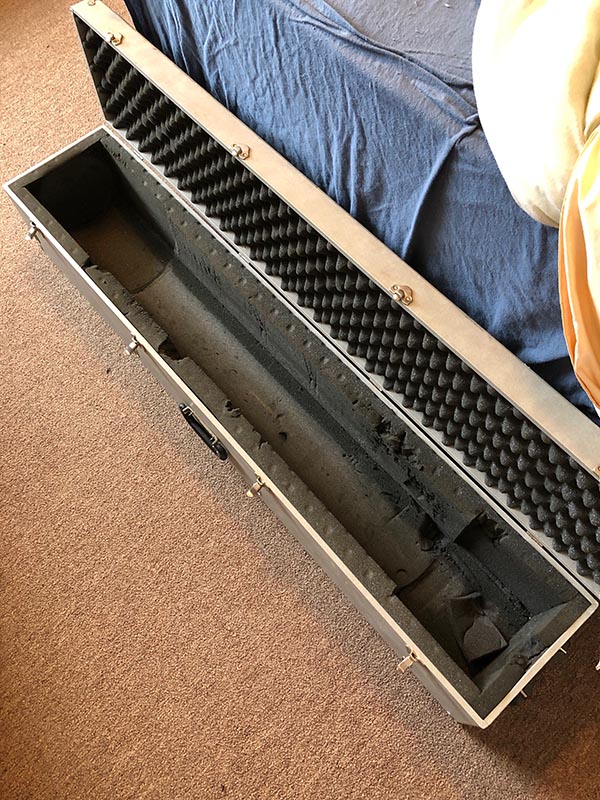 |
| The case in its original decrepit
condition. |
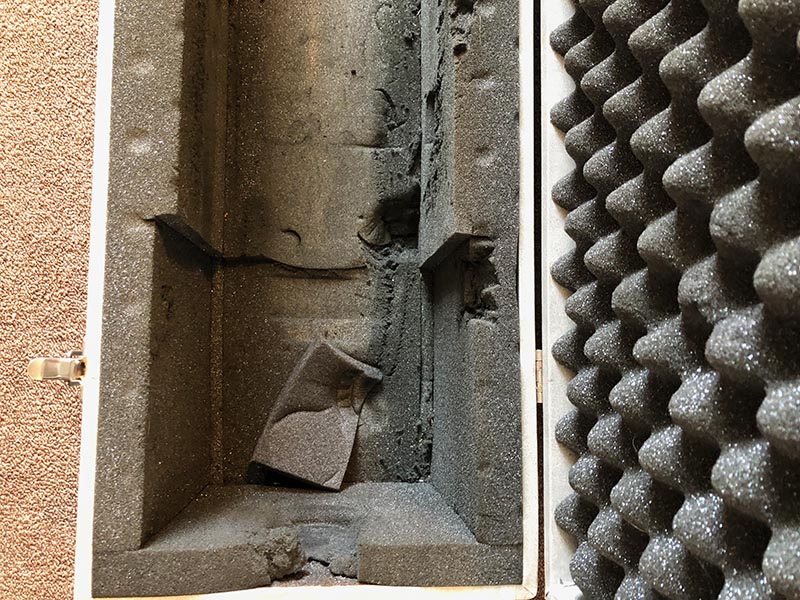 |
| I mean yuck, how horrible, right? |
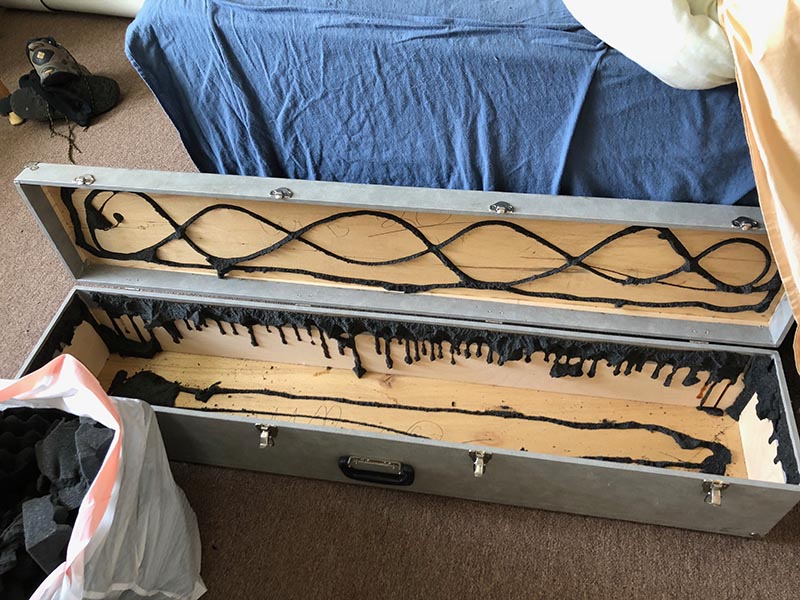 |
| After yanking out the bulk of the
rotting foam. Note the double helix of glue in the
lid. |
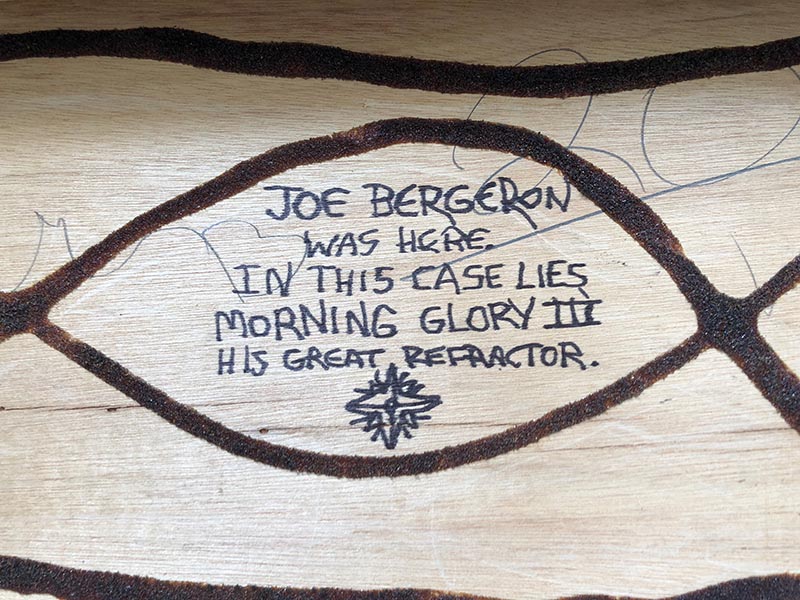 |
| I took the opportunity to add a note
for posterity. Influenced by LOTR as usual. |
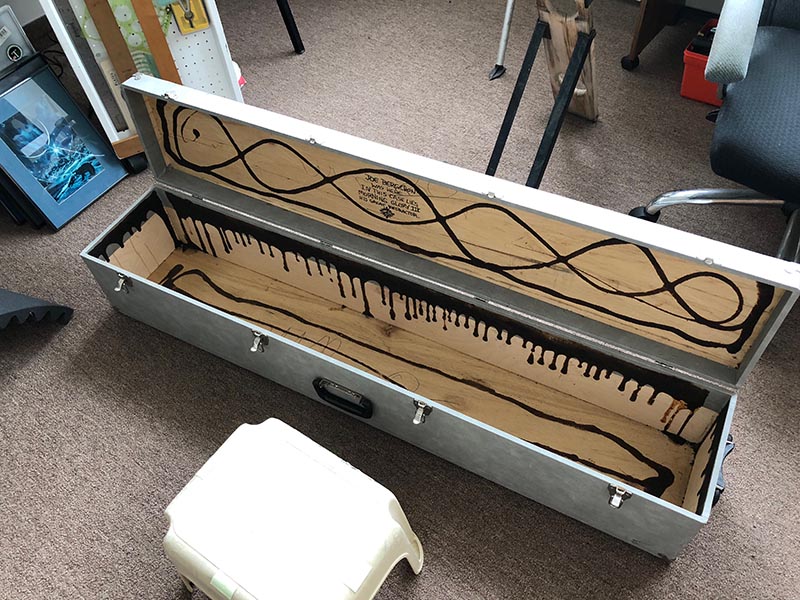 |
| After doing as much scraping as I cared
to do. |
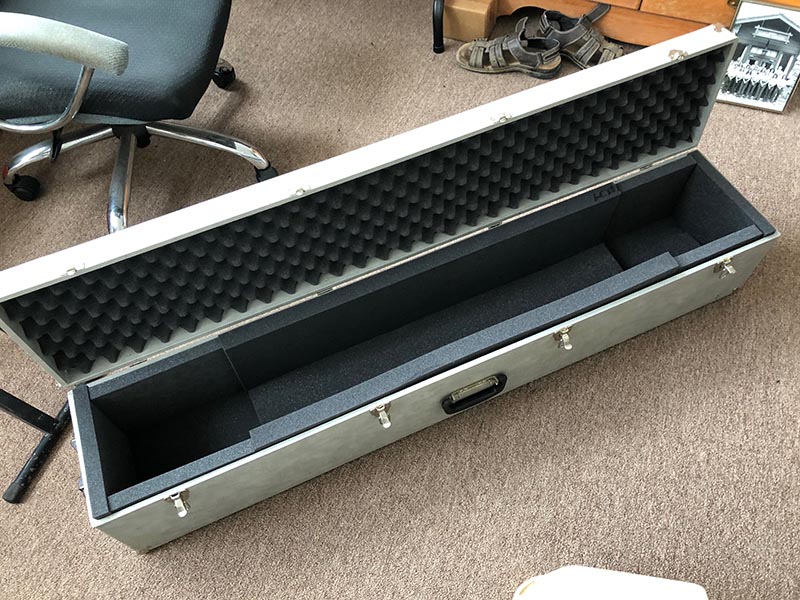 |
| "Test fitting." Hmm, looks pretty good. |
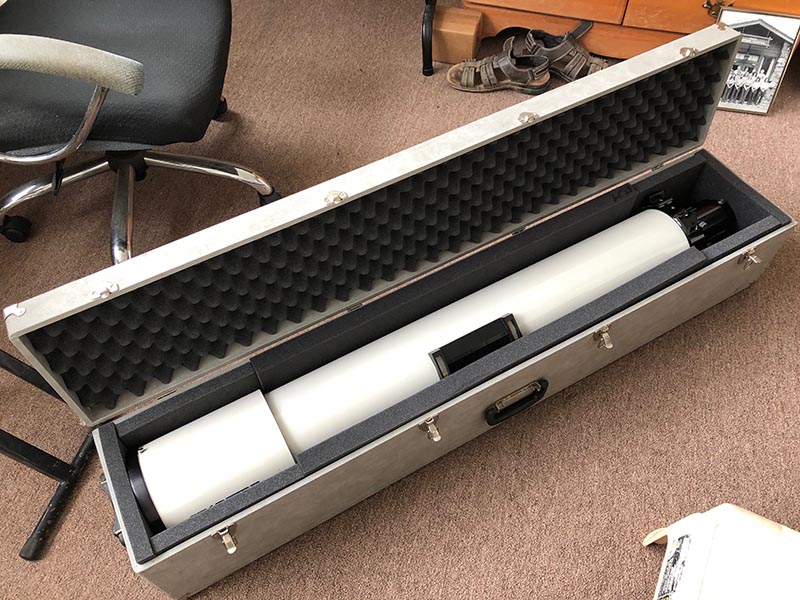 |
| The Great Refractor occupies a properly
clean and tidy home. It likes being atop its mount,
under the stars, even better. |
The Refoamation was a project wherein I undertook to replace the disintegrating foam in the wooden case provided with my 155mm Astro-Physics telescope, nigh on to 30 years ago. The distinction is important.
For years the crumbling foam had left nasty little bits of blackness on the otherwise pristine Refrigerator White tube of my great refractor. At last I could bear it no longer.
I carefully measured the many pieces of foam that made up the old lining of the case. In thickness they were all either 1" or 1.5".
A brief internet search identified a likely source for replacement foam, foambymail.com. The correct product is called Charcoal Foam-Firm.
The company will sell you large sheets of the foam, or they will cut the foam to your specifications (more or less) for significantly more money. I chose to have them cut the pieces, mainly because I didn't want to be stuck with large pieces of leftover foam after cutting out my relatively small pieces. I did have to buy their smallest sheet of the egg crate foam for the lid of the case, as they didn't offer cutting service for this material. I still have at least 2/3 of that sheet.
I placed my order, which arrived about ten days later. They warn that the package should be opened immediately, because otherwise the tightly wrapped foam could be permanently distorted. They also advise you to let the foam sit for at least 24 hours to allow it to expand to its proper shape. My foam seemed fine as soon as I opened it, and the 24 hours made no obvious difference in its shape or volume.
This foam appears identical to the original, but I hope foam technology has improved to the point where it won't start to decay in 15 or 20 years. Maybe I won't last long enough for that to be a problem.
Once thing I noticed. The case had a distinct odor whenever it was opened that persisted for decades. I always thought it was the foam, but this new foam has no strong odor. maybe it was the glue, I dunno.
If you choose to have the foam cut to size, don't expect any great accuracy. With one exception, all my pieces ran large, and some were over an inch longer than what I specified, requiring me to trim them. The exception was one piece that was cut incorrectly small, an error on their part. Luckily I had enough scraps left over to allow me to fudge that piece into place. If you don't mind cutting the pieces yourself, and have some use for the excess, you might as well just order the sheets and save some money.
Pulling the old foam out was like shredding white bread. Removing it revealed a surprise. I had investigated what adhesive was recommended to secure the foam in place, and the answer seemed to be 3M Super77 spray adhesive. But that wasn't the way the old foam was glued in. A few dribs, drabs, and loops of a liquid glue had done the job. Its brown color led me to believe it might be Gorilla Glue or something similar. As a result, the foam came out easily, except in the limited areas where it was glued in. Removing most of that residue required a lot of scraping. I decided there was no point in trying to remove every trace of the old glue.
When all was ready I put all the foam in place without any glue, as a test fitting. Yep, it all looked good. The oversized pieces stick up above the rim of the box a bit, but that doesn't appear to interfere with anything, so laziness prevailed and I chose to leave them alone.
I placed the telescope into the case. There it sat, looking quite content to occupy its newly spiffed-up home. Very fitting, one might say. I removed the telescope. The foam pieces, though not attached to the box, showed no inclination to shift or come out themselves.
Laziness won another victory, as I decided to leave things unglued, at least for now. I can always secure the foam in the future, if that seems advisable.






